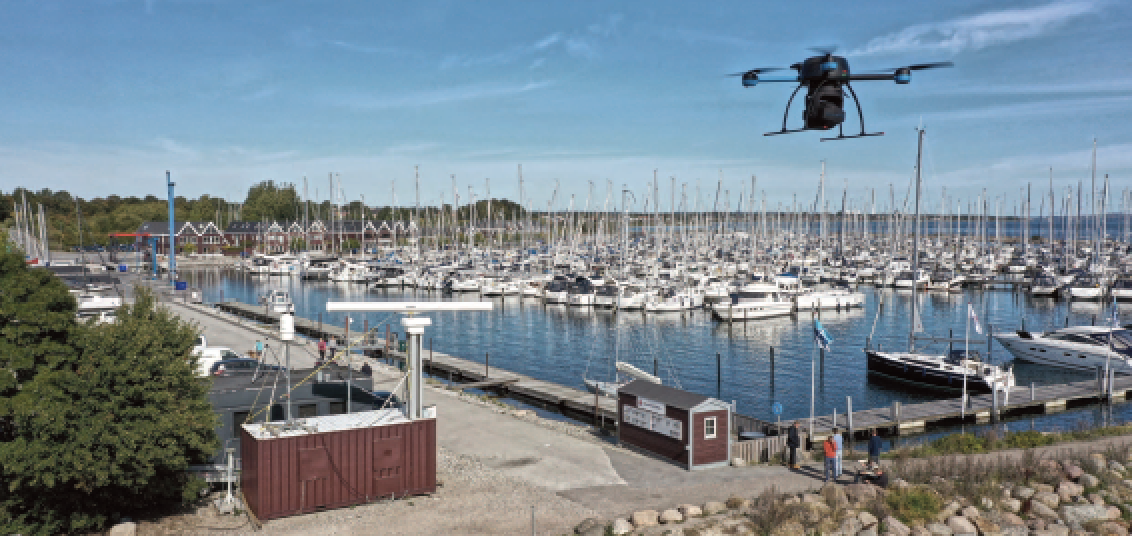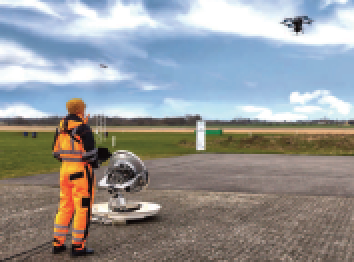Radar interference has been a steadily growing problem for satellite communications (SATCOM) and one that seems to have little chance of resolution. With services degraded, satellite operators are often forced to relocate them to other satellite capacities. With those costs involved, is this challenge something that the satellite industry can afford to ignore?

The Challenge of Radar Interference
The biggest challenges with radar interference are in the complexity to solve it and the resolution once you that has been accomplished. How do you find the source when it is generally not knowingly transmitting to the satellite?

Add to that the fact that often it will be transmitting only to the ground equipment, meaning that any tests by the satellite operator will not reveal the problem being experienced by the user. Radar interference generally happens in very short bursts, which makes it really challenging to geolocate. The fact that radar is often used in maritime applications further complicates matters, with operators looking for an interference source that is on the move.
Finding the source, therefore, involves a combination of science and engineering teams, coupled with many man hours using complex techniques, such as beam scanning and looking at pulse characteristics to determine the type of system being deployed.
Even if an operator does locate the source, resolution is not simple. Being mission critical means that it cannot simply be disabled. In some cases, it could, of course, be down to equipment failure. In those cases, repairing or upgrading that equipment may of course resolve the issue but in the meantime, the radar needs to continue to operate.
This means that very often, even if the satellite operator is able to locate the source, the resolution will still be moving satellite services. As the battle for spectrum continues to grow, finding replacement capacity once services are impacted is becoming increasingly difficult for operators.
Getting Proactive
Satellite interference, whatever the source, is either solved reactively or proactively. The reactive measures will always be important because no matter how many proactive methods are in place, there will always be some level of interference and operators need tools at the ready to tackle those. That said, the reactive measures work best in those scenarios where finding the source can lead to relatively easy resolution.
For example, if the interference is deliberate, the jammer can be blocked. If it is caused by human error, that can also normally be resolved quickly.
Proactive measures aimed at stopping interference before it happens are always a good strategy to have, especially in the case of radar interference where resolution comes with so many challenges. How can we proactively prevent this from occurring?
Raising Awareness
The majority of satellite interference is caused by human error. Over recent years, the satellite industry has worked to raise awareness of satellite interference, the causes as well as the tools to mitigate it. The same should be addressed for radar interference. There are a few important areas when it comes to awareness:
• Awareness of satellite operators regarding the affected frequency ranges. Operators are generally ware that in those frequency ranges where radar systems have priority, there could be interference. Mitigating that when using those comes down to careful planning as some services would be hugely impacted whereas others could continue in these bands unaffected.
• Awareness of radar operators concerning how radar interference occurs and how to prevent it would dramatically reduce the instances of accidental transmission to a satellite or ground station.
• Awareness of regulators ensures that other options can be explored such as zones around teleports being kept clear of interference-causing systems. This needs to be organised locally by the ground station operator.
Compliance with RSEC
One of the biggest tools in the proactive fight against satellite interference is that of type approvals. Another major cause of interference is equipment failure that can be greatly reduced if all satellite equipment has to meet a certain standard before being deployed on a network. The Radar Spectrum Engineering Criteria (RSEC) is intended to ensure that radar systems meet an acceptable degree of electromagnetic compatibility, ensuring that possible interference is limited as much as possible.

Most cases of radar interference occur because the equipment being used does not meet RSEC criteria. If regulators were to ensure more widespread compliance with the standard, the instances of interference would dramatically reduce.
Testing
While compliance with standards and best practices is important, checking that each radar system does comply is simply not feasible currently. Testing is complex, made more so because radar systems themselves have become more complex over recent years. Testing usually occurs on a test range, which is extremely time-consuming and costly, or by the way of computer simulations and laboratory-generated measurements of radar performance, which are extremely useful but have their limitations.
Toward the end of last year, we conducted tests together with Terma to determine whether our RF-testing drone could also test and validate radar system performance at the site where the radar is deployed. For the purpose of the demonstration, two radar systems were used. One deployed on land and one at the coast. We then measured the radar systems to validate the simulations done by Terma showing how the radar systems are affected by multipath lobing, such as reflections from ground and water.

The tests were successful, meaning we can provide insights from on-site measurements of radars in its operational environment anywhere in the world. This enables a wide range of use-cases that can assist in ensuring radar system performance in a way that has not been possible before. This would of course be a critical response to ensuring they don’t cause interference, but it could also be applicable to a wide-range of use-cases, such as measuring the effect of buildings and topography surrounding a radar, or even how the radome covering the radar antenna might change characteristics over time.
The Way Forward

Radar interference is a complex challenge that cannot be easily resolved. There will always be instances when it occurs and the resolution will remain a case of moving other satellite capacity. However, through a combination of raising awareness, ensuring compliance, and testing performance, we can start to reduce instances and mitigate the effects.
www.quadsat.com
Author Joakim Espeland is the Chief Executive Officer at QuadSAT.

